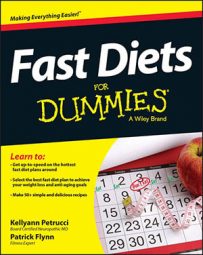The Paleo Diet is the perfect complement to fasting. Together, fasting and the Paleo Diet are the evolutionary keys to unlocking true health, leanness, and vitality.
The Paleo Diet, which is also known as the Caveman Diet, aims to replicate the eating habits of your ancestors. In short, when you're on this diet, you eat the foods you're biologically designed to eat.
From a genetic composition standpoint, humans have changed very little over the past 40,000 years. The advent of agriculture, which is a relatively recent invention in the grand scheme of things (relatively recent as in the last 10,000 years) hasn't significantly influenced our genes, which is also true of the Industrial Revolution.
Hence, humans simply aren't adapted to eat many of the foods that the agricultural and industrial revolutions have made so readily available — namely, grains and processed foods. Many physicians, nutritionists, scientists, and anthropologists believe that the poor dietary habits established since the dawn of the agricultural and industrial revolutions are the root causes of illnesses such as heart disease, cancer, diabetes, and hypertension.
Just like fasting, the Paleo Diet has you call in question many commonly held beliefs, such as the idea that whole grains are a necessary part of a balanced diet. This idea, of course, would be false. Whole grains are by no means necessary. In fact, you can find anything that is beneficial in whole grains elsewhere for fewer calories and fewer carbohydrates.
The Paleo Diet helps you lose weight
Not only does the Paleo Diet promote a sustainable and sound approach to nutrition, but it also helps with the weight loss process as well, and here's why:
You eat nutrient-dense foods. Nutrient-dense means foods that pack the most nutrition (such as vitamins, minerals, antioxidants, and amino acids) in the least amount of calories. You want to consume foods that your body can actually use, such as lean protein, fibrous vegetables, and healthy fats, while avoiding junk calories, which means no candy, no breads, and no soft drinks.
You eat low-glycemic foods. Doing so can help you maintain healthy blood sugar and insulin levels, shifting your body’s preferred fuel source from sugar to fat (this is what many refer to as being fat-adapted).
Furthermore, because the Paleo Diet balances out blood sugar, you'll have increased energy for more effective workout sessions.
You eat healthier and feel fuller. Because of an emphasis on healthy fats, protein, and leafy vegetables, you're fuller for longer than you otherwise would on a higher carb diet, consuming less calories overall.
Put together your Paleo Diet meals
These lists are by no means all-inclusive, but they can give you a good idea of where to start, and provide you with everything you need to organize a healthy, balanced, Paleolithic meal. Here are a few basic guidelines when it comes to constructing your meals:
Consume protein at every meal. Protein has the highest thermic effect of food (meaning it takes more calories for the body to process protein than it does carbohydrates or fats) and promotes a greater sense of satiety (fullness) than carbohydrates do.
Always consume a source of fibrous vegetables at each meal. Examples include broccoli, asparagus, and cauliflower. Vegetables such as these pack tons of nutrients in very few calories and will further promote satiety.
Eat starchy carbohydrates last. Starchy carbohydrates such as sweet potatoes are denser in terms of calories and carbohydrates than vegetables of the leafy variety. This isn't to say that they should be avoided entirely, only consumed judiciously. As a general rule, if you're going to have starchy carbohydrates, consume them last — after proteins, vegetables, and healthy fats — when you're less hungry and therefore less likely to overdo it.
Eat to satisfaction not to fullness. That is, take your time eating your meals and enjoy the food. Don't shovel it down for the sake of shoveling it down.

